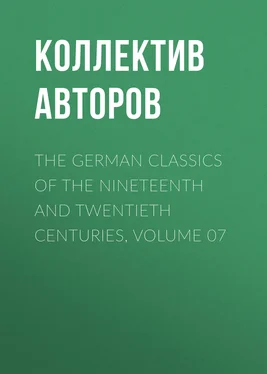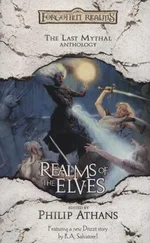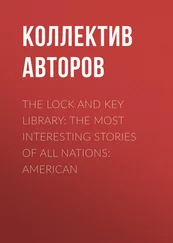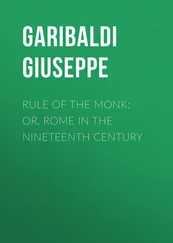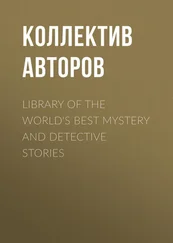Коллектив авторов - The German Classics of the Nineteenth and Twentieth Centuries, Volume 07
Здесь есть возможность читать онлайн «Коллектив авторов - The German Classics of the Nineteenth and Twentieth Centuries, Volume 07» — ознакомительный отрывок электронной книги совершенно бесплатно, а после прочтения отрывка купить полную версию. В некоторых случаях можно слушать аудио, скачать через торрент в формате fb2 и присутствует краткое содержание. Жанр: foreign_prose, foreign_antique, на английском языке. Описание произведения, (предисловие) а так же отзывы посетителей доступны на портале библиотеки ЛибКат.
- Название:The German Classics of the Nineteenth and Twentieth Centuries, Volume 07
- Автор:
- Жанр:
- Год:неизвестен
- ISBN:нет данных
- Рейтинг книги:3 / 5. Голосов: 1
-
Избранное:Добавить в избранное
- Отзывы:
-
Ваша оценка:
- 60
- 1
- 2
- 3
- 4
- 5
The German Classics of the Nineteenth and Twentieth Centuries, Volume 07: краткое содержание, описание и аннотация
Предлагаем к чтению аннотацию, описание, краткое содержание или предисловие (зависит от того, что написал сам автор книги «The German Classics of the Nineteenth and Twentieth Centuries, Volume 07»). Если вы не нашли необходимую информацию о книге — напишите в комментариях, мы постараемся отыскать её.
The German Classics of the Nineteenth and Twentieth Centuries, Volume 07 — читать онлайн ознакомительный отрывок
Ниже представлен текст книги, разбитый по страницам. Система сохранения места последней прочитанной страницы, позволяет с удобством читать онлайн бесплатно книгу «The German Classics of the Nineteenth and Twentieth Centuries, Volume 07», без необходимости каждый раз заново искать на чём Вы остановились. Поставьте закладку, и сможете в любой момент перейти на страницу, на которой закончили чтение.
Интервал:
Закладка:
This abstract relation brings also to consciousness the foreignness of the spiritual idea to natural phenomena. And the spiritual idea, having no other reality to express its essence, expatiates in all these natural shapes, seeks itself in their unrest and disproportion, but finds them inadequate to it. It then exaggerates these natural phenomena and shapes them into the huge and the boundless. The spiritual idea revels in them, as it were, seethes and ferments in them, does violence to them, distorts and disfigures them into grotesque shapes, and endeavors by the diversity, hugeness, and splendor of such forms to raise the natural phenomena to the spiritual level. For here it is the spiritual idea which is more or less vague and non-plastic, while the objects of nature have a thoroughly definite form.
The incongruity of the two elements to each other makes the relation of the spiritual idea to objective reality a negative one. The spiritual as a wholly inner element and as the universal substance of all things, is conceived unsatisfied with all externality, and in its sublimity it triumphs over the abundance of unsuitable forms. In this conception of sublimity the natural objects and the human shapes are accepted and left unaltered, but at the same time recognized as inadequate to their own inner meaning; it is this inner meaning which is glorified far and above every worldly content.
These elements constitute, in general, the character of the primitive artistic pantheism of the Orient, which either invests even the lowest objects with absolute significance, or forces all phenomena with violence to assume the expression of its world-view. This art becomes therefore bizarre, grotesque, and without taste, or it represents the infinite substance in its abstract freedom turning away with disdain from the illusory and perishing mass of appearances. Thus the meaning can never be completely molded into the expression, and, notwithstanding all the aspiration and effort, the incongruity between the spiritual idea and the sensuous form remains insuperable. This is, then, the first form of art-symbolic art with its endless quest, its inner struggle, its sphinx-like mystery, and its sublimity.
CLASSICAL ART
In the second form of art, which we wish to designate as the classical , the double defect of symbolic art is removed. The symbolic form is imperfect, because the spiritual meaning which it seeks to convey enters into consciousness in but an abstract and vague manner, and thus the congruity between meaning and form must always remain defective and therefore abstract. This double aspect disappears in the classical type of art; in it we find the free and adequate embodiment of the spiritual idea in the form most suitable to it, and with it meaning and expression are in perfect accord. It is classical art, therefore, which first affords the creation and contemplation of the completed ideal, realizing it as a real fact in the world.
But the congruity of idea and reality in classical art must not be taken in a formal sense of the agreement of a content with its external form; otherwise every photograph of nature, every picture of a countenance, landscape, flower, scene, etc., which constitutes the aim of a representation, would, through the conformity of content and form, be at once classical. The peculiarity of classical art, on the contrary, consists in its content being itself a concrete idea, and, as such, a concrete spiritual idea, for only the spiritual is a truly essential content. For a worthy object of such a content, Nature must be consulted as to whether she contains anything to which a spiritual attribute really belongs. It must be the World-Spirit itself that invented the proper form for the concrete spiritual ideal—the subjective mind—in this case the spirit of art—has only found it, and given it natural plastic existence in accordance with free individual spirituality. The form in which the idea, as spiritual and individual, clothes itself when revealed as a temporal phenomenon, is the human form . To be sure, personification and anthropomorphism have frequently been decried as a degradation of the spiritual; but art, in so far as its task is to bring before direct contemplation the spiritual in sensuous form, must advance to such anthropomorphism, for only in its body can mind appear in an adequately sensuous fashion. The migration of souls is, in this respect, an abstract notion, and physiology should make it one of its fundamental principles that life has necessarily, in its evolution, to advance to the human shape as the only sensuous phenomenon appropriate to the mind.
The human body as portrayed by classical art is not represented in its mere physical existence, but solely as the natural and sensuous form and garb of mind; it is therefore divested of all the defects that belong to the merely sensuous and of all the finite contingencies that appertain to the phenomenal. But if the form must be thus purified in order to express the appropriate content, and, furthermore, if the conformity of meaning and expression is to be complete, the content which is the spiritual idea must be perfectly capable of being expressed through the bodily form of man, without projecting into another sphere beyond the physical and sensuous representation. The result is that Spirit is characterized as a particular form of mind, namely, as human mind, and not as simply absolute and eternal; but the absolute and eternal Spirit must be able to reveal and express itself in a manner far more spiritual.
This latter point brings to light the defect of classical art, which demands its dissolution and its transition to a third and higher form, to wit, the romantic form of art.
ROMANTIC ART
The romantic form of art destroys the unity of the spiritual idea and its sensuous form, and goes back, though on a higher level, to the difference and opposition of the two, which symbolic art left unreconciled. The classical form of art attained, indeed, the highest degree of perfection which the sensuous process of art was capable of realizing; and, if it shows any defects, the defects are those of art itself, due to the limitation of its sphere. This limitation has its root in the general attempt of art to represent in sensuous concrete form the infinite and universal Spirit, and in the attempt of the classical type of art to blend so completely spiritual and sensuous existence that the two appear in mutual conformity. But in such a fusion of the spiritual and sensuous aspects Spirit cannot be portrayed according to its true essence, for the true essence of Spirit is its infinite subjectivity; and its absolute internal meaning does not lend itself to a full and free expression in the confinement of the bodily form as its only appropriate existence.
Now, romantic art dissolves the inseparable unity which is the ideal of the classical type, because it has won a content which goes beyond the classical form of art and its mode of expression. This content—if familiar ideas may be recalled—coincides with what Christianity declares to be true of God as Spirit, in distinction to the Greek belief in gods which constitutes the essential and appropriate subject for classical art. The concrete content of Hellenic art implies the unity of the human and divine nature, a unity which, just because it is merely implied and immediate , permits of a representation in an immediately visible and sensuous mold. The Greek god is the object of naïve contemplation and sensuous imagination; his shape is, therefore, the bodily shape of man; the circle of his power and his essence is individual and confined. To man the Greek god appears as a being and a power with whom he may feel a kinship and unity, but this kinship and unity, are not reflected upon or raised into definite knowledge. The higher stage is the knowledge of this unconscious unity, which underlies the classical form of art and which it has rendered capable of complete plastic embodiment. The elevation of what is unconscious and implied into self-conscious knowledge brings about an enormous difference; it is the infinite difference which, for example, separates man from the animal. Man is an animal, but, even in his animal functions, does not rest satisfied with the potential and the unconscious as the animal does, but becomes conscious of them, reflects upon them, and raises them—as, for instance, the process of digestion—into self-conscious science. And it is thus that man breaks through the boundary of his merely immediate and unconscious existence, so that, just because he knows himself to be animal, he ceases in virtue of such knowledge to be animal, and, through such self-knowledge only, can characterize himself as mind or spirit.
Читать дальшеИнтервал:
Закладка:
Похожие книги на «The German Classics of the Nineteenth and Twentieth Centuries, Volume 07»
Представляем Вашему вниманию похожие книги на «The German Classics of the Nineteenth and Twentieth Centuries, Volume 07» списком для выбора. Мы отобрали схожую по названию и смыслу литературу в надежде предоставить читателям больше вариантов отыскать новые, интересные, ещё непрочитанные произведения.
Обсуждение, отзывы о книге «The German Classics of the Nineteenth and Twentieth Centuries, Volume 07» и просто собственные мнения читателей. Оставьте ваши комментарии, напишите, что Вы думаете о произведении, его смысле или главных героях. Укажите что конкретно понравилось, а что нет, и почему Вы так считаете.
